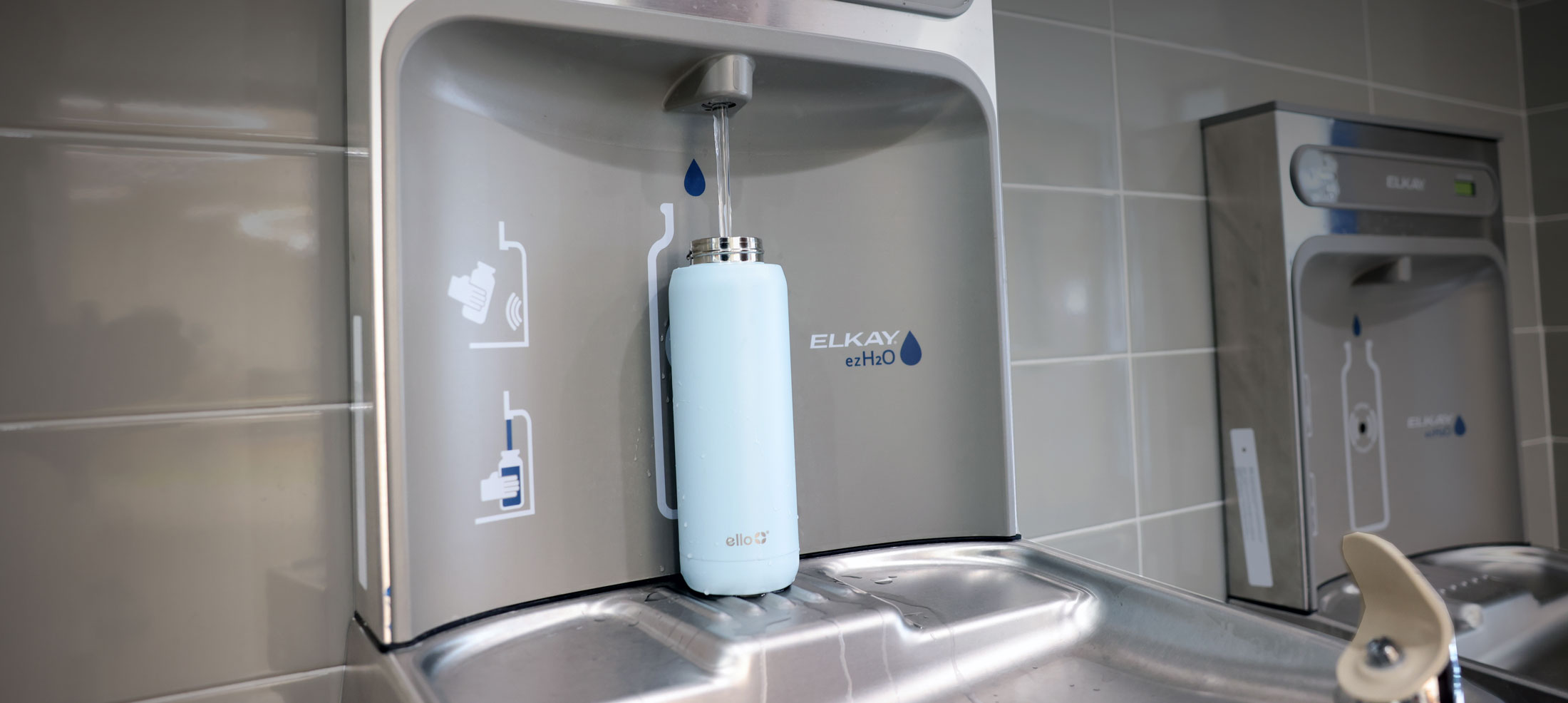
MICHIGAN BECOMES FIRST STATE IN NATION TO MANDATE FILTERED BOTTLE-FILLING STATIONS AT SCHOOLS, FOLLOWING STUDIES THAT DEMONSTRATE SIGNIFICANT BENEFITS OF THEIR USE
Story by Mike Flenniken
Nearly a decade after Flint, Michigan’s water crisis that saw lead levels in the city nearly triple and coincided with a deadly Legionnaire’s disease outbreak, the state has become the first in the nation to require filtered bottle-filling stations in all schools and child-care centers.
Signed into law Oct. 19 by Gov. Gretchen Whitmer, the legislation also requires schools and child-care centers to develop a drinking water management plan that identifies where the stations are located and to conduct routine sampling and testing to ensure safe and accessible drinking water for children. The plan must be updated every five years.
“In Michigan, we have seen the devastating and long-lasting impact of lead exposure, and we are committed to making sure no child has to suffer through this again,” Whitmer said in a statement. “That’s why we’ve enforced the strongest lead and copper rule in the country, invested billions of dollars into water facilities, and helped communities replace lead service lines and rebuild their water infrastructure.”
Schools have 15 months from the bill’s signing to develop the plan and must install at least one bottle-filling station or filtered faucet for every 100 students by the end of the 2025-26 school year. Child-care centers may only provide water to children that comes from a filtered source such as a filling station or faucet that is certified to meet NSF/ANSI standard 42 for particulate removal and NSF/ANSI standard 53 for lead reduction.
“No amount of lead in water is safe for kids,” state Rep. Ranjeev Puri, a co-sponsor, said in a statement. “As parents in the Great Lakes State — surrounded by an abundance of fresh water — the least we can expect is that the place we send our children every day to learn and play is safe and has clean drinking water.”
“Impacts of child lead exposure are well known, as well as negative effects on the learning environment,” said state Sen. Sylvia Santana, who co-sponsored the legislation in the Senate. “With implementation of filter first, and monitoring water quality in all schools and daycare centers, our state is taking a preventative approach to ensure all children receive the head start in life they deserve.”
The new law continues a nationwide trend of replacing traditional drinking fountains with filling stations that provide water that is usually filtered so that it looks and tastes better.
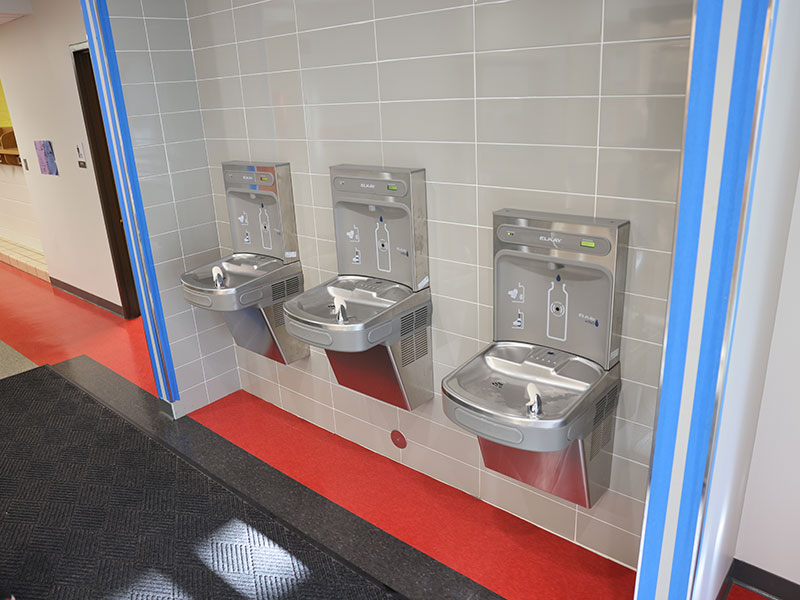

SCHOOLS JOINING IN
Just south of Michigan in the Chicago suburb of Glenview, Illinois, the nine schools that make up District 34 — whose schools run in three-year intervals from preschool through eighth grade — recently replaced drinking fountains with bottle filling stations. Principals Selene Stewart of Hoffman School (grades three through five) and Patricia Puetz of Henking School (kindergarten through second grade) said they have already seen a profound difference in the amount of water students and staff are drinking.
Stewart said a single water fountain outside the lunchroom was replaced with a bank of three filling stations, and there is also a filling station inside the lunchroom.
“Students and staff are using them like crazy and I think it’s really helpful for the kids,” Stewart said. “If they fill up their water bottle, then they don’t have to miss a lot of class going out for a drink, where with a traditional water fountain, you have to keep going back for a small drink as opposed to just having a full bottle with you in class.”
Puetz said at Henking, in additional to replacing the bubblers with three filling stations near the bathrooms, they installed one near a bathroom that is part of a new wing that was built. She said the teachers also love the filling stations.
“The way they’re stationed, it’s closer to their classrooms,” she said. “There’s one in every hallway, basically, and they’ve done a really good job of creating systems for students to keep their water bottles in their classrooms and make sure that they take them home and rinse them and bring them back. And they talk about how good it is for the environment as well.”
Stewart attributed the stations’ hygienic aspect to the increase in staff usage.

“I see more staff using them,” she said. “I don’t think the staff were always that comfortable using the traditional water fountains. Maybe they had concerns about germs, but I think with the water bottle filling station, nobody’s mouth is going anywhere near it, so people are very comfortable using it.”
Puetz said having a water bottle nearby has organically become part of something that many people at the school do, and speculated that many of the students must use them frequently at home, too.
“Kids are accustomed to bringing their water bottle and having somewhere to fill it in their home lives, so we’ve brought that to them at school and I think everyone sees the benefits of that,” she said.
PLUMBING CODES
For IAPMO’s Uniform Plumbing Code (UPC®), requirements for bottle filling stations fall under those for drinking fountains, and bottle filling stations may be used as a substitute for up to 50 percent of the requirements for traditional drinking fountains.
IAPMO R&T Lab and IAPMO R&T have been testing and certifying bottle filling stations for more than 10 years. The standards to which they are tested and certified include ASME A112.19.3/ CSA B45.4: Stainless Steel Plumbing Fixtures; IGC 226: Drinking Water Fountains With or Without Chiller or Heater; NSF/ANSI/ CAN 61: Drinking Water System Components; and NSF/ANSI/CAN 372: Drinking Water System Components – Lead Content. When the stations include water filters, they are typically tested and certified to NSF/ANSI 42: Drinking Water Treatment Units, Aesthetic Effects; and NSF/ ANSI 53: Drinking Water Treatment Units, Health Effects.

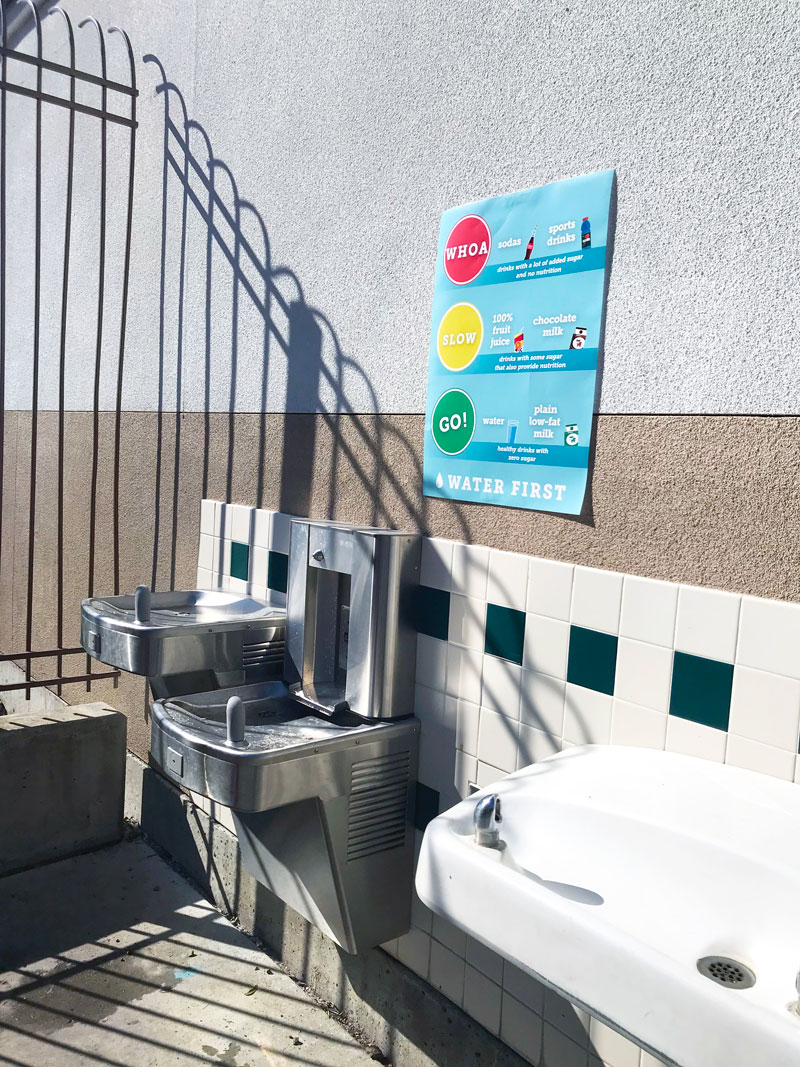
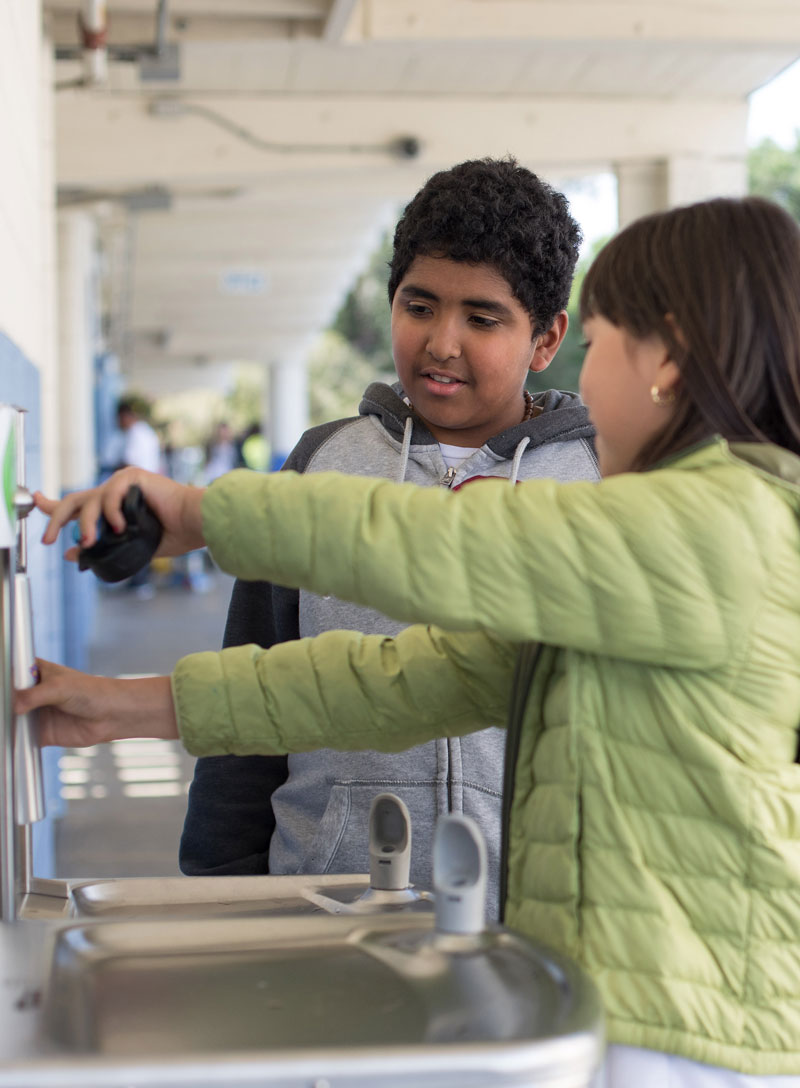
WATER FIRST
Meanwhile in California’s Bay Area, a group of ethnically diverse and low-income schools participated in a program to promote — and study the health effects of — increased water consumption.
The Water First study, led by Dr. Anisha Patel, professor of pediatrics at Stanford University, followed more than 1,200 fourth-grade students from 18 schools (nine intervention and nine control) over 15 months.
Patel said at the intervention schools, the program included the installation of a water dispenser with cups in the cafeteria, two filling stations in other high-traffic areas of each school, classroom lessons related to healthy beverage choice, distribution of reusable water bottles, and schoolwide water promotion over one school year.
After 15 months, the intervention schools only saw a 0.5 percentage point increase in the number of students classified as being overweight, while the increase at control schools was 3.7 percentage points.
Patel emphasized the need for teachers and parents to serve as role models when it comes to healthy behaviors, citing a previous study that found students whose teachers drank water in front of their classes were significantly more likely to say they drank water during the school day.
Reminding students to get water and giving them time to access water is essential, she added, and suggested adding fruit or vegetable slices or herbs to plain water for students who prefer sweet drinks.
“It is also important to make sure that safe and appealing drinking water is accessible in places where students live, learn, and play,” she said. “It can be hard to get more than a few sips of water from traditional fountains if there aren’t cups or reusables water bottles to drink from. Developing a culture of using reusable water bottles at school, at home, and on the go can also help.”
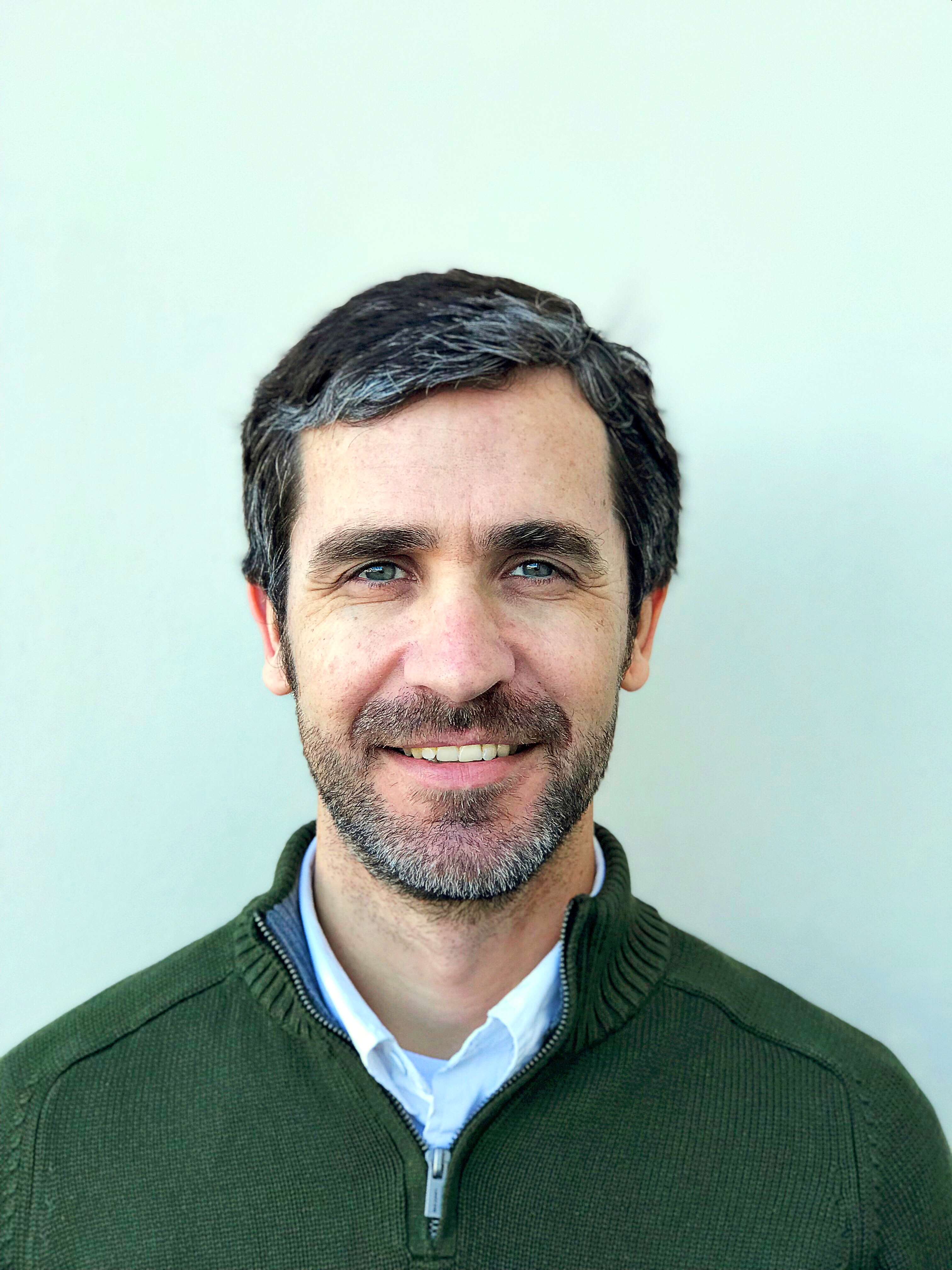
Mike Flenniken
Mike Flenniken is a staff writer, Marketing and Communications, for IAPMO. Prior to joining IAPMO in 2010, Flenniken worked in public relations for a group of Southern California hospitals and as a journalist in writing and editing capacities for various Southern California daily newspapers.
Last modified: March 20, 2024
